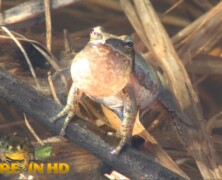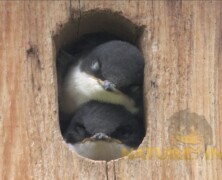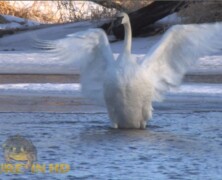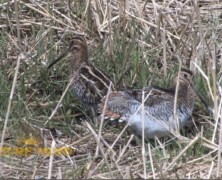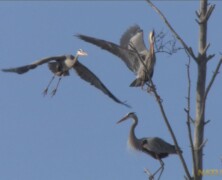When you are only an inch long, you have special issues. Being heard above all others so you can find a mate, can be a problem. And, with wetlands diminishing, space is a challenge. Meet the Northern Spring Peeper. Called “pinkletinks” or “tinkeltoes” in some areas of the...
Tree Swallows and New Fle...
posted by Nature In HD
Tree Swallows are cavity nesters. Choice locations are holes in trees, but they readily take to man-made nest boxes. The male diligently guards the nest box from predators such as House Sparrows or Red Squirrels, while the female builds the nest and incubates. Young swallows spend most of...
Trumpeter Swans in Icy Sp...
posted by Nature In HD
Spring does not always bring early warmth. These Trumpeter Swans are spending this cold spring grouped together, patiently waiting for warm rain to open more waterways. The adults, living to 20 years or more, measure four feet high with a wingspan of seven feet. Once hunted to near...
Wilson’s Snipe
posted by Nature In HD
The Wilson’s snipe is a common shorebird that enjoys the wet, grassy areas of early spring melt-water ponds. It uses its long, flexible bill to probe the ground; searching out earthworms and small invertebrates. As seen here, during the breeding season, the snipe exploits its flashy tail...
Great Blue Heron Early Sp...
posted by Nature In HD
Even before the snow has left us completely, the Great Blue Herons arrive in the rookeries. The first males to arrive get the prime, strongest nest sites within the rookery. These same nests may be used year after year, or new ones built. They defend their territory from other males, eagerly...

